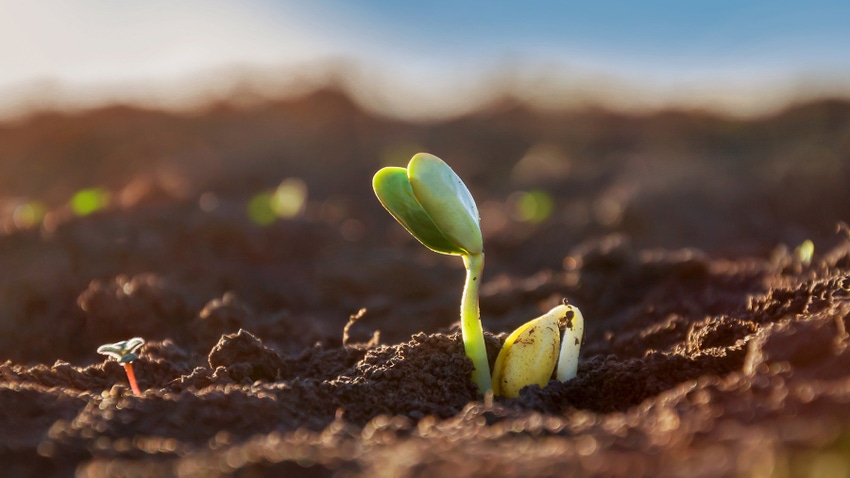
At a Glance
- Five years of N.C. State research reveals earlier planted soybeans tend to produce shorter plants.
Optimal planting dates across North Carolina to maximize soybean yields range from April 20 to May 30, depending on where you farm in the state.
In soybean schools held around the state this winter, North Carolina State University Soybean Specialist Rachel Vann emphasized there are risks of planting soybeans too early — or too late — and that these dates have evolved alongside soybean genetics.
Too early planting risks include possible frost damage, seedling disease pressure, increased early season insect pressure, and end-of-season quality issues.
Vann shares that five years of N.C. State research reveals one of the biggest risks of planting too early is that earlier planted soybeans tend to produce shorter plants than soybeans planted in late April to mid-May. These plants were found to not get the vegetative engine needed to drive yield, a counterintuitive finding that surprised researchers.
Height and yield
In a Feb. 13 Soybean School at the Maxwell Center in Goldsboro, Vann stressed the importance of plant height to soybean yield. She said soybean plants need to reach about 36 inches to maximize yields. The research also reveals that if a soybean plant gets taller than 36 inches, yields can flatten and even decline at above 45 inches.
“The conventional wisdom is the earlier you plant, the taller your soybeans are going to get. That’s not what we’ve seen. March beans are often some of our shortest beans, less than 36 inches, often shorter than our double crop beans planted in June. Our taller beans are usually planted in April or May,” Vann said.
“It didn’t matter if they were determinate or indeterminate beans, the earliest planted beans were shorter than beans planted in late April and mid-May. And that has yield implications, and that’s one of the things that’s drawing down yields in these early planting situations, so that’s a risk that plays out in our environment,” Vann explained.
“Why are we seeing shorter plant heights with planting dates before mid-April when we would generally expect that the earliest planted beans would be the tallest? Based on our research, we have consistently seen that the early season temperatures have not driven vegetative growth in soybeans planted before mid-April like temperatures drive vegetative growth in full-season soybeans planted in May and early June,” Vann explained in an Extension posting.
She also notes that soybeans tend to not recover from early growth and flowering in soybeans planted before mid-April due to lack of heat.
Late planting problems
In the meantime, Vann said the risk of pushing your planting date beyond May 30 is that you are not maximizing leaf area and often not getting to the needed 36-inch height to be at maximum yield potential.
In the past, Jim Dunphy, Vann’s predecessor as the N.C. State soybean specialist, said the optimum soybean date in North Carolina ranges from May 1 to June 10. Vann said at the time, these dates were appropriate due to the genetics of soybean varieties and the management practices used then.
But today, soybean genetics are different, and North Carolina soybean farmers are turning to more aggressive management practices, so the April 20 to May 30 planting dates are now ideal. Depending on where you are in the state, your planting date cutoff before you start losing yield might be closer to mid-May.
Timing factors
Vann emphasizes that numerous factors impact planting date decisions in different areas of North Carolina. To aid soybean farmers in selecting their ideal planting date, N.C. State will debut an online grower decision support tool on the Extension soybean portal that gathers data and presents it in a more metabolized format that is easy to use.
“The tool is being beta-tested with growers and Extension Agents currently to make it the best it can be. The tool will allow you to drop a pin on the map of North Carolina, and it will generate a prediction on the best planting date to use for your area. Once you’ve identified your planting date range, it will allow you to make a prediction on the best maturity group and seeding rate combination to use within that planting date. We beta-tested with a number of growers and Extension agents, and we’ve got a whole list of things that we need to make the tool better prior to public release,” Vann said.
Vann said they hope to release the tool on April 1. She encourages farmers to go to the soybean portal for updates on the release of the decision support tool.
Read more about:
Early PlantingAbout the Author(s)
You May Also Like






